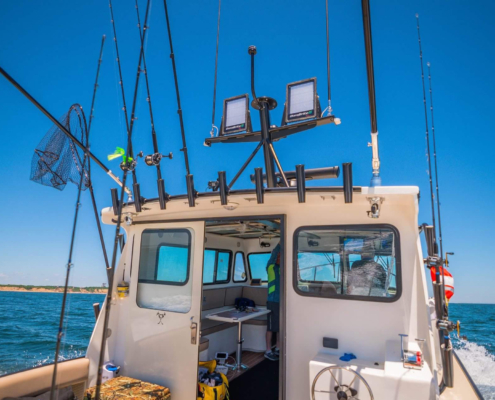 https://blog.durabritelights.com/wp-content/uploads/2025/04/How-Weatherproofing-Maximizes-the-Lifespan-of-Waterproof-Boat-Lights.jpg
1250
2000
Abstrakt Marketing
/wp-content/uploads/2024/01/DuraBrite-Logo_6a362a2d-4dff-4723-a7e4-1466056fae1e_220x.png
Abstrakt Marketing2025-04-21 13:30:212025-04-21 13:30:24How Weatherproofing Maximizes the Lifespan of Waterproof Boat Lights
https://blog.durabritelights.com/wp-content/uploads/2025/04/How-Weatherproofing-Maximizes-the-Lifespan-of-Waterproof-Boat-Lights.jpg
1250
2000
Abstrakt Marketing
/wp-content/uploads/2024/01/DuraBrite-Logo_6a362a2d-4dff-4723-a7e4-1466056fae1e_220x.png
Abstrakt Marketing2025-04-21 13:30:212025-04-21 13:30:24How Weatherproofing Maximizes the Lifespan of Waterproof Boat LightsHow to Maximize the Lifespan of Marine LED Lighting
Investing in marine LED lighting is an easy choice for superior brightness, energy efficiency, and durability. However, even the best LED lights can fail prematurely if you don’t choose the right lights for your boat. Given the high cost of marine LED lighting, ensuring a long lifespan is crucial to protecting your investment. Choosing the right lights for your needs reduces replacement costs and downtime while maximizing the value of your investment season after season.
1. Research What Sets Marine-Grade LED Lights Apart
Even if a light is labeled as marine-grade, performance and lifespan can vary drastically due to differences in engineering, internal components, and material quality. The term marine grade is used loosely by manufacturers, so conduct your own research before upgrading to LED lights. What sets one manufacturer apart from another is not just the label but the materials, waterproofing standards, and design choices that determine how well a light withstands the harsh marine environment.
What to Look for in True Marine-Grade LEDs
It’s easy to assume that a marine-grade label guarantees a light will perform well in saltwater conditions, but that’s not always the case. Some companies simply rebrand their standard fixtures and add a protective coating, while better manufacturers build their marine lights from the ground up with corrosion-resistant materials, advanced waterproofing, and specialized seals.
True marine-grade lighting should feature:
- IP67 or higher waterproof ratings to ensure protection from splashes, submersion, and heavy exposure to moisture.
- Corrosion-resistant composite polymer housings treated with advanced coatings to prevent oxidation and pitting, ensuring long-term durability and performance in saltwater environments.
- Shock-resistant and vibration-proof construction to withstand rough waves and the continuous motion of marine vessels.
If lights don’t have these key characteristics, they won’t last long in marine environments.
Why Doing Your Research Matters
The level of corrosion resistance, durability, and waterproofing varies significantly between brands. Some lights may look identical on the surface but differ in how they are sealed, the quality of their internal components, and their ability to handle temperature fluctuations, UV exposure, and saltwater immersion.
Cheaper lights might work for a while but can quickly deteriorate due to corrosion, poor heat dissipation, or substandard waterproofing techniques. Before purchasing, compare materials, IP ratings, pressure relief systems, and real-world reviews from professional fishermen who rely on their lights every day. Investing in true marine-grade LED lights reduces the risk of early failures and frequent replacements, ultimately saving money in the long run while giving you peace of mind they’ll work every time you flip the switch.
2. Prevent Water Ingress and Corrosion
Marine grade does not always equal waterproof. Many marine-grade lights are only water-resistant, meaning prolonged exposure to moisture can still lead to seal failure, internal condensation, and corrosion. True waterproof lights must have an IP rating of 67 or higher and pressure relief valves to prevent internal condensation buildup and overstressing the seal, which is a major cause of LED failure from fluctuating temperatures.
Even with waterproof ratings, improper installation and neglect can allow moisture and saltwater to penetrate LED fixtures, causing electrical shorts and corrosion. Here’s how to prevent water damage:
- Properly seal all electrical connections using heat-shrink tubing and IP67+ connectors.
- Ensure fixtures are securely mounted to prevent water from seeping into exposed wiring.
- Inspect gaskets and seals regularly to check for wear and replace them as needed.
- Look for brands who use waterproof pressure relief valves in enclosed fixtures.
How Corrosion Impacts Performance
Saltwater exposure accelerates corrosion, leading to dimming lights, flickering, or total failure. Applying ceramic coatings significantly extends the lifespan of your marine LED lighting.
3. Keep LED Fixtures Clean and Free of Debris
Marine LED lights accumulate salt, dirt, and algae buildup, which can reduce brightness and efficiency. Regular cleaning is essential for maintaining peak performance:
- Rinse lights with fresh water after every trip to remove salt deposits.
- Use mild soap and a soft cloth to clean lenses monthly without scratching them.
- Avoid harsh chemicals that could degrade protective coatings.
- Check for debris around cooling fins and heatsinks, which can trap heat and reduce efficiency.
How Dirt and Debris Shorten Lifespan
LEDs require efficient heat dissipation to function correctly. When cooling fins or heat vents become clogged with debris, LEDs overheat, reducing brightness and shortening lifespan. Regular rinsing and monthly cleaning ensure your lights operate efficiently.
Maximize the lifespan of your boat lights with DuraBrite’s Gen2 series. Engineered for unmatched brightness, efficiency, and wireless control, our Gen2 lights deliver industry-leading performance with innovative features that enhance safety and convenience on the water.
4. Optimize Heat Dissipation and Prevent Thermal Stress
Marine LED lights need to be waterproof and able to handle extreme temperature shifts without losing efficiency or failing. The expansion and contraction caused by freeze-thaw cycles, prolonged UV exposure, and heat buildup can lead to seal degradation, warping, and internal component failure. Proper heat dissipation is critical for maintaining waterproof integrity over time.
Excessive heat is one of the main causes of LED degradation. Poor heat management can lead to burned-out components, reduced efficiency, and waterproof seal failure. Ensure lights feature vertical heatsinks to allow better airflow and reduce heat buildup. They should also be mounted in areas with proper ventilation to prevent overheating.
The Role of Pressure Relief Valves
LEDs in sealed fixtures can experience pressure changes due to temperature fluctuations, leading to moisture buildup and condensation inside the housing. Pressure relief valves balance internal pressure, preventing water ingress by protecting waterproof seals from premature failure.
5. Avoid These Common Mistakes That Reduce LED Lifespan
Many boat owners unknowingly make mistakes that shorten the life of their marine LED lighting. Here’s what to avoid:
- Skipping regular rinsing: Neglecting cleaning and quick inspections can result in minor issues that may eventually accelerate failure.
- Using standard LED fixtures: Standard LEDs corrode quickly in marine conditions.
- Exposing wiring to moisture: Poorly sealed connections lead to electrical shorts.
- Ignoring early warning signs: Dimming, flickering, or water droplets inside the lens signal problems.
By being proactive with regular checks, proper sealing, and controlled heat management, you can extend the lifespan of marine LED lighting and ensure consistent, long-term performance.
FAQs About Marine LED Lighting Maintenance
How long do marine LED lights typically last?
High-quality marine LED lights can last 40,000+ hours, but this doesn’t mean they will suddenly stop working at that mark. Instead, 40,000 hours is the point where brightness starts to noticeably diminish. However, with proper maintenance and protection, these lights can continue functioning well beyond their rated lifespan.
What is the best way to prevent corrosion in marine LED lights?
Regularly rinse lights with freshwater, apply corrosion inhibitors or ceramic coatings, and seal electrical connections properly.
How often should I clean my LED boat lights?
Rinse lights after every trip and clean with mild soap monthly to remove salt, algae, and debris buildup.
Do marine LED lights require special wiring or installation?
Yes, marine-grade wiring and sealed connectors prevent water damage and electrical failures. Look for light kits that include all the necessary marine-grade connectors for an easier installation process, ensuring a secure and waterproof electrical setup from the start.
Can saltwater damage marine LED lights?
Yes, without proper sealing and maintenance, salt exposure can quickly corrode components and cause LED lights to fail.
What is the ideal IP rating for waterproof LED boat lights?
IP67 or IP68 ratings are recommended for protection against water, salt spray, and submersion.
Are LED boat lights more energy-efficient than halogen lights?
Yes, LEDs consume 75% less energy, produce less heat, and last 10 to 20 times longer.
What are common signs that a marine LED light needs to be replaced?
Dimming, flickering, condensation inside the lens, and noticeable corrosion often indicate deeper issues and may require replacement to be fixed. Reach out to a marine lighting expert to troubleshoot your specific problem.
Protect Your Investment With Long-Lasting Marine LED Lighting
Maximizing the lifespan of marine LED lighting requires proactive maintenance, proper installation, and protection against heat and corrosion. By investing in high-quality, marine-grade LEDs and following these care tips, captains can reduce replacement costs, improve lighting performance, and ensure reliability in harsh marine environments.
Looking for the best marine LED lights on the market today? DuraBrite offers best-in-class marine LED lighting solutions designed to withstand the toughest marine conditions. Our experts work to protect your investment with best-in-class engineering—start exploring our collection of best-in-class marine lights today to see what sets us apart.
Share This Post
More Like This
 https://blog.durabritelights.com/wp-content/uploads/2025/04/How-Weatherproofing-Maximizes-the-Lifespan-of-Waterproof-Boat-Lights.jpg
1250
2000
Abstrakt Marketing
/wp-content/uploads/2024/01/DuraBrite-Logo_6a362a2d-4dff-4723-a7e4-1466056fae1e_220x.png
Abstrakt Marketing2025-04-21 13:30:212025-04-21 13:30:24How Weatherproofing Maximizes the Lifespan of Waterproof Boat Lights
https://blog.durabritelights.com/wp-content/uploads/2025/04/How-Weatherproofing-Maximizes-the-Lifespan-of-Waterproof-Boat-Lights.jpg
1250
2000
Abstrakt Marketing
/wp-content/uploads/2024/01/DuraBrite-Logo_6a362a2d-4dff-4723-a7e4-1466056fae1e_220x.png
Abstrakt Marketing2025-04-21 13:30:212025-04-21 13:30:24How Weatherproofing Maximizes the Lifespan of Waterproof Boat Lights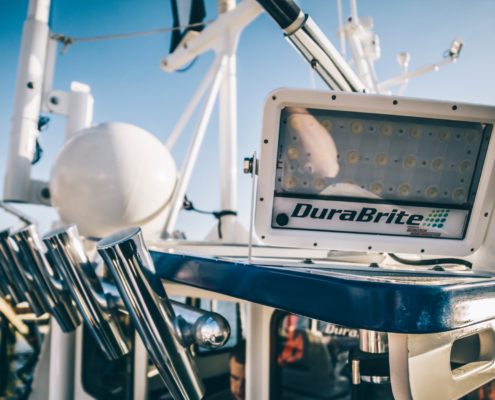 https://blog.durabritelights.com/wp-content/uploads/2025/04/Design-Ideas-for-LED-Deck-Lights-on-Your-Boat.jpg
1250
2000
Abstrakt Marketing
/wp-content/uploads/2024/01/DuraBrite-Logo_6a362a2d-4dff-4723-a7e4-1466056fae1e_220x.png
Abstrakt Marketing2025-04-02 14:09:522025-04-09 16:52:11Design Ideas for LED Deck Lights on Your Boat
https://blog.durabritelights.com/wp-content/uploads/2025/04/Design-Ideas-for-LED-Deck-Lights-on-Your-Boat.jpg
1250
2000
Abstrakt Marketing
/wp-content/uploads/2024/01/DuraBrite-Logo_6a362a2d-4dff-4723-a7e4-1466056fae1e_220x.png
Abstrakt Marketing2025-04-02 14:09:522025-04-09 16:52:11Design Ideas for LED Deck Lights on Your Boat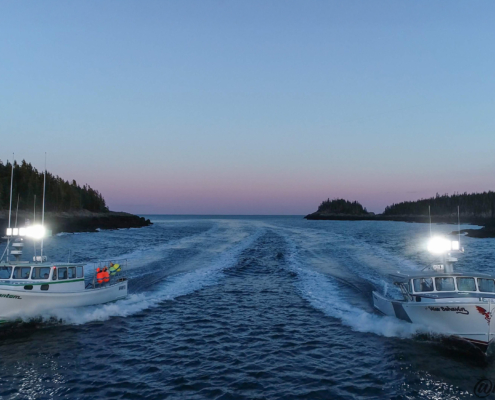 https://blog.durabritelights.com/wp-content/uploads/2025/03/Front-view-of-two-small-boats-on-water-in-the-evening.jpg
1250
2000
Abstrakt Marketing
/wp-content/uploads/2024/01/DuraBrite-Logo_6a362a2d-4dff-4723-a7e4-1466056fae1e_220x.png
Abstrakt Marketing2025-03-31 18:57:432025-04-09 16:50:06The Connection Between Energy Efficiency and LED Lights for Boats
https://blog.durabritelights.com/wp-content/uploads/2025/03/Front-view-of-two-small-boats-on-water-in-the-evening.jpg
1250
2000
Abstrakt Marketing
/wp-content/uploads/2024/01/DuraBrite-Logo_6a362a2d-4dff-4723-a7e4-1466056fae1e_220x.png
Abstrakt Marketing2025-03-31 18:57:432025-04-09 16:50:06The Connection Between Energy Efficiency and LED Lights for Boats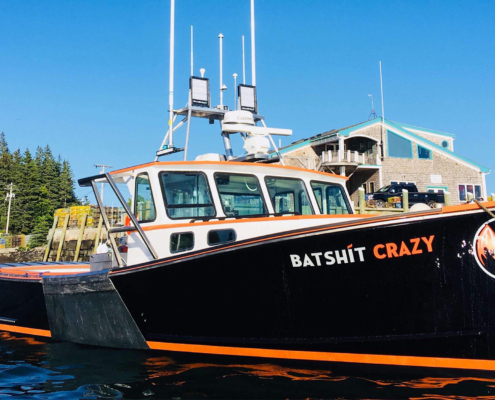 https://blog.durabritelights.com/wp-content/uploads/2025/03/Side-image-of-a-boat-with-lights.jpg
1250
2000
Abstrakt Marketing
/wp-content/uploads/2024/01/DuraBrite-Logo_6a362a2d-4dff-4723-a7e4-1466056fae1e_220x.png
Abstrakt Marketing2025-03-27 18:36:262025-03-31 17:43:25The Hidden Costs of Cheap Marine LED Lights and How to Avoid Them
https://blog.durabritelights.com/wp-content/uploads/2025/03/Side-image-of-a-boat-with-lights.jpg
1250
2000
Abstrakt Marketing
/wp-content/uploads/2024/01/DuraBrite-Logo_6a362a2d-4dff-4723-a7e4-1466056fae1e_220x.png
Abstrakt Marketing2025-03-27 18:36:262025-03-31 17:43:25The Hidden Costs of Cheap Marine LED Lights and How to Avoid Them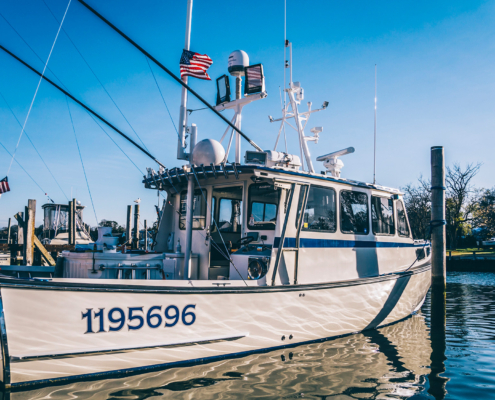 https://blog.durabritelights.com/wp-content/uploads/2025/03/Side-view-of-docked-boat-with-durabrite-lights.jpg
1250
2000
Abstrakt Marketing
/wp-content/uploads/2024/01/DuraBrite-Logo_6a362a2d-4dff-4723-a7e4-1466056fae1e_220x.png
Abstrakt Marketing2025-03-25 18:25:092025-03-31 17:39:29Boating Accident Statistics: How to Minimize Risks and Stay Safe
https://blog.durabritelights.com/wp-content/uploads/2025/03/Side-view-of-docked-boat-with-durabrite-lights.jpg
1250
2000
Abstrakt Marketing
/wp-content/uploads/2024/01/DuraBrite-Logo_6a362a2d-4dff-4723-a7e4-1466056fae1e_220x.png
Abstrakt Marketing2025-03-25 18:25:092025-03-31 17:39:29Boating Accident Statistics: How to Minimize Risks and Stay Safe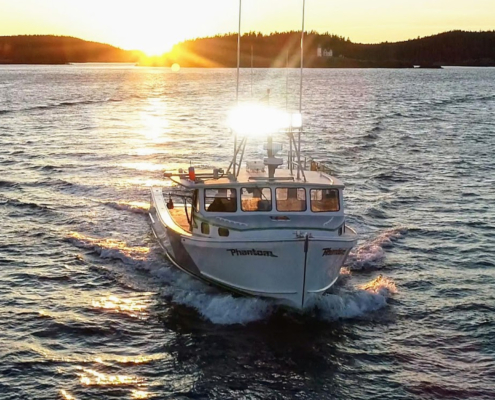 https://blog.durabritelights.com/wp-content/uploads/2025/03/The-5-Must-Have-Features-of-High-Quality-Marine-Lights.jpg
1250
2000
Abstrakt Marketing
/wp-content/uploads/2024/01/DuraBrite-Logo_6a362a2d-4dff-4723-a7e4-1466056fae1e_220x.png
Abstrakt Marketing2025-03-21 12:36:192025-03-31 17:18:16The 5 Must-Have Features of High-Quality Marine Lights
https://blog.durabritelights.com/wp-content/uploads/2025/03/The-5-Must-Have-Features-of-High-Quality-Marine-Lights.jpg
1250
2000
Abstrakt Marketing
/wp-content/uploads/2024/01/DuraBrite-Logo_6a362a2d-4dff-4723-a7e4-1466056fae1e_220x.png
Abstrakt Marketing2025-03-21 12:36:192025-03-31 17:18:16The 5 Must-Have Features of High-Quality Marine Lights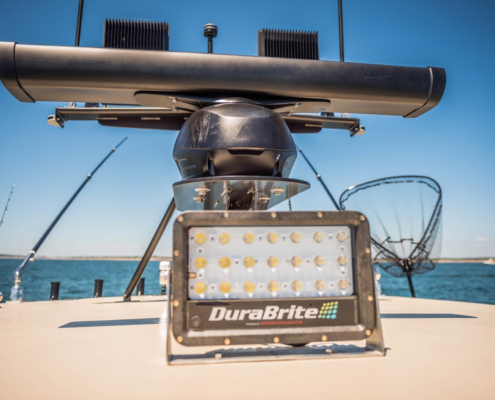 https://blog.durabritelights.com/wp-content/uploads/2025/03/DuraBrite-Lght-on-Boat.jpg
1250
1996
Abstrakt Marketing
/wp-content/uploads/2024/01/DuraBrite-Logo_6a362a2d-4dff-4723-a7e4-1466056fae1e_220x.png
Abstrakt Marketing2025-03-19 12:23:432025-03-31 17:07:19How DuraBrite Built a Better Marine Light
https://blog.durabritelights.com/wp-content/uploads/2025/03/DuraBrite-Lght-on-Boat.jpg
1250
1996
Abstrakt Marketing
/wp-content/uploads/2024/01/DuraBrite-Logo_6a362a2d-4dff-4723-a7e4-1466056fae1e_220x.png
Abstrakt Marketing2025-03-19 12:23:432025-03-31 17:07:19How DuraBrite Built a Better Marine Light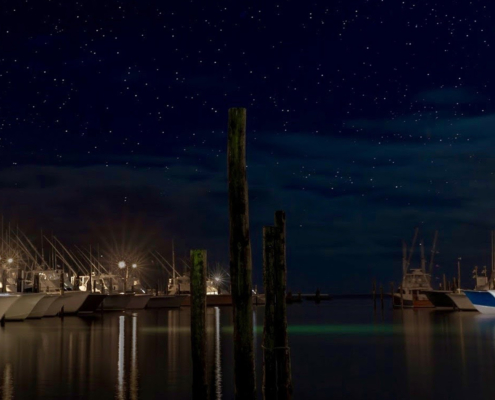 https://blog.durabritelights.com/wp-content/uploads/2025/03/Comparing-Halogen-HID-and-LED-Marine-Lights.jpg
1250
2000
Abstrakt Marketing
/wp-content/uploads/2024/01/DuraBrite-Logo_6a362a2d-4dff-4723-a7e4-1466056fae1e_220x.png
Abstrakt Marketing2025-03-17 14:26:562025-03-31 16:56:54Comparing Halogen, HID, and LED Lights for Boats: Which Is Right for You?
https://blog.durabritelights.com/wp-content/uploads/2025/03/Comparing-Halogen-HID-and-LED-Marine-Lights.jpg
1250
2000
Abstrakt Marketing
/wp-content/uploads/2024/01/DuraBrite-Logo_6a362a2d-4dff-4723-a7e4-1466056fae1e_220x.png
Abstrakt Marketing2025-03-17 14:26:562025-03-31 16:56:54Comparing Halogen, HID, and LED Lights for Boats: Which Is Right for You?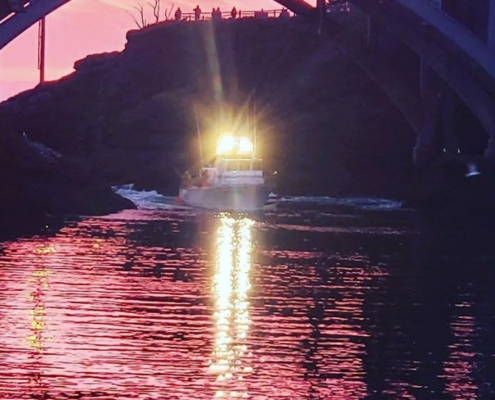 https://blog.durabritelights.com/wp-content/uploads/2025/03/How-S.O.S-signaling-can-be-crucial-on-the-water.jpg
1250
2000
Abstrakt Marketing
/wp-content/uploads/2024/01/DuraBrite-Logo_6a362a2d-4dff-4723-a7e4-1466056fae1e_220x.png
Abstrakt Marketing2025-03-12 14:09:302025-03-31 16:40:10A Guide to SOS Light Signaling on the Water
https://blog.durabritelights.com/wp-content/uploads/2025/03/How-S.O.S-signaling-can-be-crucial-on-the-water.jpg
1250
2000
Abstrakt Marketing
/wp-content/uploads/2024/01/DuraBrite-Logo_6a362a2d-4dff-4723-a7e4-1466056fae1e_220x.png
Abstrakt Marketing2025-03-12 14:09:302025-03-31 16:40:10A Guide to SOS Light Signaling on the WaterCreating advanced lighting solutions that excel across extreme applications, from crab-fishing in Alaska’s Bering Sea, to unforgiving power plants to mission critical law enforcement and military tactical environments, all with uncompromising quality


